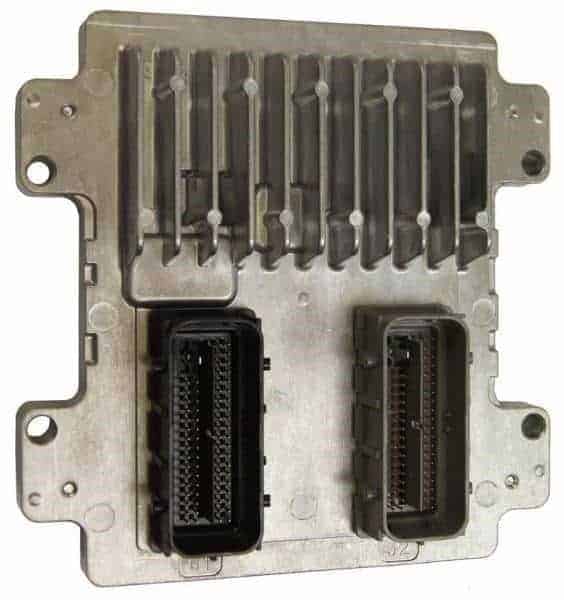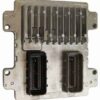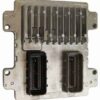Restore Peak Performance to Your GM Vehicle
Is your van or truck suffering from baffling electrical gremlins, a persistent check engine light, or frustrating performance issues? A failing Powertrain Control Module (PCM) is often the hidden culprit behind poor fuel economy, erratic shifting, or even a no-start condition. This isn’t just an inconvenience; it’s a compromise on your vehicle’s reliability and your peace of mind. This replacement PCM, part number 12597125, is the definitive solution, arriving at your doorstep fully programmed with the latest GM software updates tailored specifically to your vehicle’s VIN. Forget expensive dealership visits and programming fees—this is the direct, dependable fix to get you back on the road with confidence.
Warning Signs Your PCM Needs Attention
A vehicle’s PCM is its brain, and when it falters, the symptoms can be widespread. If you’re experiencing any of the following, it’s time to consider a replacement:
- ✔ Persistent Check Engine Light (CEL) with codes like P0601, P0606, or communication errors.
- ✔ Unexplained drop in fuel mileage.
- ✔ Harsh or erratic automatic transmission shifting.
- ✔ Engine stalling, sputtering, or refusing to start.
- ✔ Failure to pass state emissions testing.
- ✔ Other warning lights on the dashboard illuminating without a clear cause.
An Old-Timer’s Tale: The Ghost in the Machine
I remember a customer with an ’08 Sierra, a work truck that was his livelihood. It would randomly stall at traffic lights—no codes, no warnings. He’d replaced half the sensors under the hood. We finally hooked up a scope and saw the 5-volt reference signal from the PCM was dropping out intermittently. It was like a ghost pulling the plug. We installed a VIN-programmed module just like this one, and that ghost was gone for good. He called a week later, ecstatic that his truck was finally trustworthy again. Sometimes, the simplest solution is the right one.
Guided Installation for Your 2008-2009 Express 1500 PCM
Replacing your PCM is a straightforward job that most DIYers can handle with basic tools. Following these steps will ensure a smooth process and get your vehicle running right.
- Safety First: Always disconnect the negative terminal from your vehicle’s battery and wait at least 15 minutes to allow the system’s capacitors to discharge completely.
- Locate the Module: On the Express/Savana van, the PCM is typically located in the rear of the engine compartment on the driver’s side. On trucks, it’s often under the battery tray on the driver’s side front. Consult a repair manual for your specific model if you’re unsure.
- Disconnect Wiring: Carefully release the locking tabs on the electrical connectors. These can be brittle, so apply steady, even pressure. Pull the connectors straight out from the module.
- Remove the Old PCM: Unbolt the mounting hardware holding the old PCM in its bracket. Note the orientation of the module before removing it completely.
- Install the New PCM: Mount your new, pre-programmed PCM in the same location and orientation. Secure it with the original hardware.
- Reconnect and Secure: Firmly press the wiring harnesses back into the new module until they click and the locking tabs are fully engaged. Reconnect your vehicle’s battery terminal.
- Final Steps: After installation, you will likely need to perform a Crankshaft Position System Variation (CASE) relearn procedure using a compatible professional scan tool. This synchronizes the new PCM with your engine’s sensors for optimal timing and performance.
Tailored Fit for Your Ride
This module is a direct-fit replacement for a wide range of GM vehicles. Please verify your part number or consult the list below. This computer is compatible with service numbers: 12612397, 126140, 12594750, 12597125, 12629019, 12635902, 12611549.
- Chevrolet Express 1500 / GMC Savana 1500 (2008-2009) w/ 4.3L
- Chevrolet Silverado 1500 / GMC Sierra 1500 (2007-2009) w/ 4.3L
- Chevrolet Malibu (2007-2012) w/ 2.2L, 2.4L, or 3.5L
- Chevrolet Cobalt (2007-2010) w/ 2.2L or 2.4L
- Chevrolet HHR (2007-2011) w/ 2.2L or 2.4L
- Chevrolet Impala (2010-2011)
- Buick Lucerne (2009-2011) w/ 3.9L
- Pontiac G5 / G6 (2007-2010)
- Pontiac Solstice / Saturn Sky (2008-2010) w/ 2.4L
- Saturn Aura (2008-2009) w/ 2.4L
- Saturn Vue (2008-2010) w/ 2.4L
Pro Tip: Check Your Grounds!
Before you condemn your old PCM, take 10 minutes to check and clean the main engine and chassis ground connections. A corroded or loose ground can cause bizarre, PCM-like symptoms and can even damage a new module. A little preventative maintenance goes a long way!
Frequently Asked Questions
Do I need to do anything after installing this PCM?
Yes. While the main programming is done for you, you will need a professional scan tool to perform a Crankshaft Position System Variation (CASE) relearn, also known as a crank relearn. This procedure is essential for proper engine timing and to prevent a check engine light. Some vehicles may also require a security relearn, which can often be done without a special tool.
What information do you need from me?
After you complete your purchase, you must provide us with your vehicle’s 17-digit Vehicle Identification Number (VIN). We use this to load the exact, correct factory software and calibrations for your specific vehicle, ensuring a perfect match.
Is this a plug-and-play part?
It’s very close! Because we pre-program it to your VIN, it eliminates the need for expensive dealership flashing. However, the required CASE relearn procedure means it’s not strictly ‘plug-and-play,’ as a final synchronization step is needed after installation.
Will this fix my vehicle’s specific problem?
This PCM will resolve issues directly caused by a faulty module. If you’re experiencing symptoms like a P0601 internal memory error, this is the definitive fix. However, it’s always best to have a proper diagnosis performed to rule out other potential causes like bad sensors or wiring problems.
What if I have an anti-theft system like Passlock or VATS?
Our programming includes the necessary information for your vehicle’s security system. In most cases, you will need to perform a simple security relearn procedure after installation, which typically involves cycling the key in the ignition. We can provide instructions for this process.


